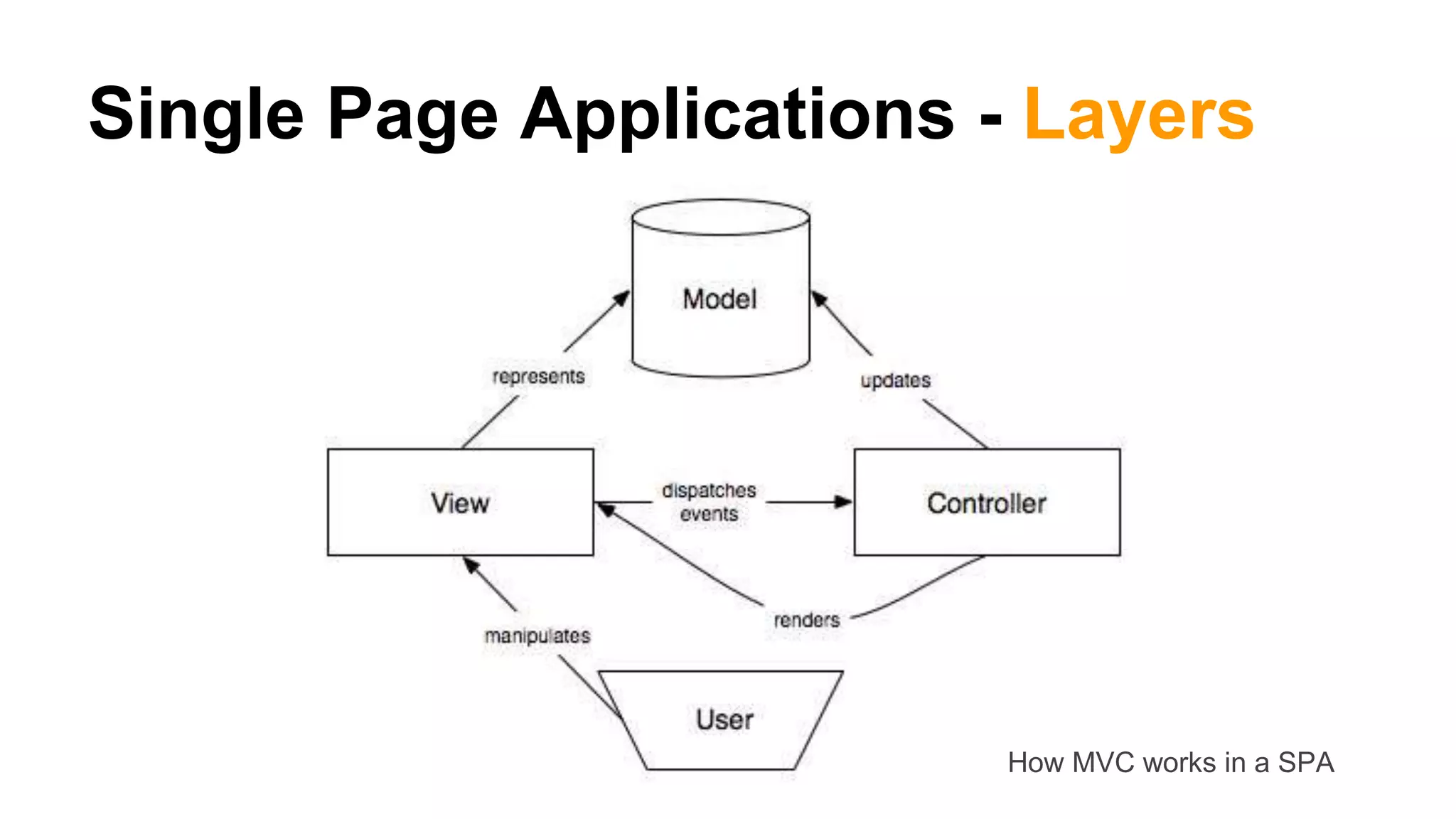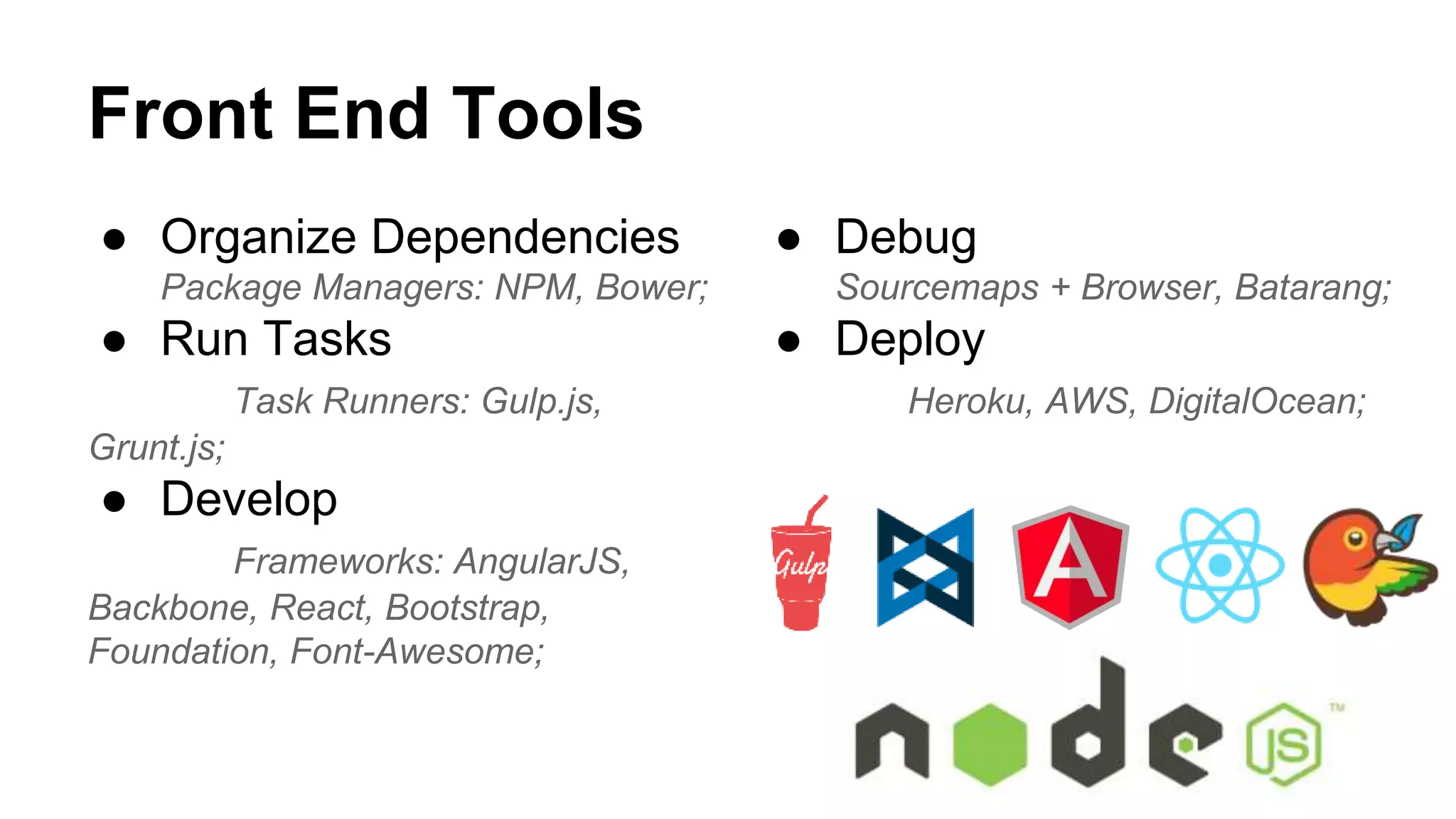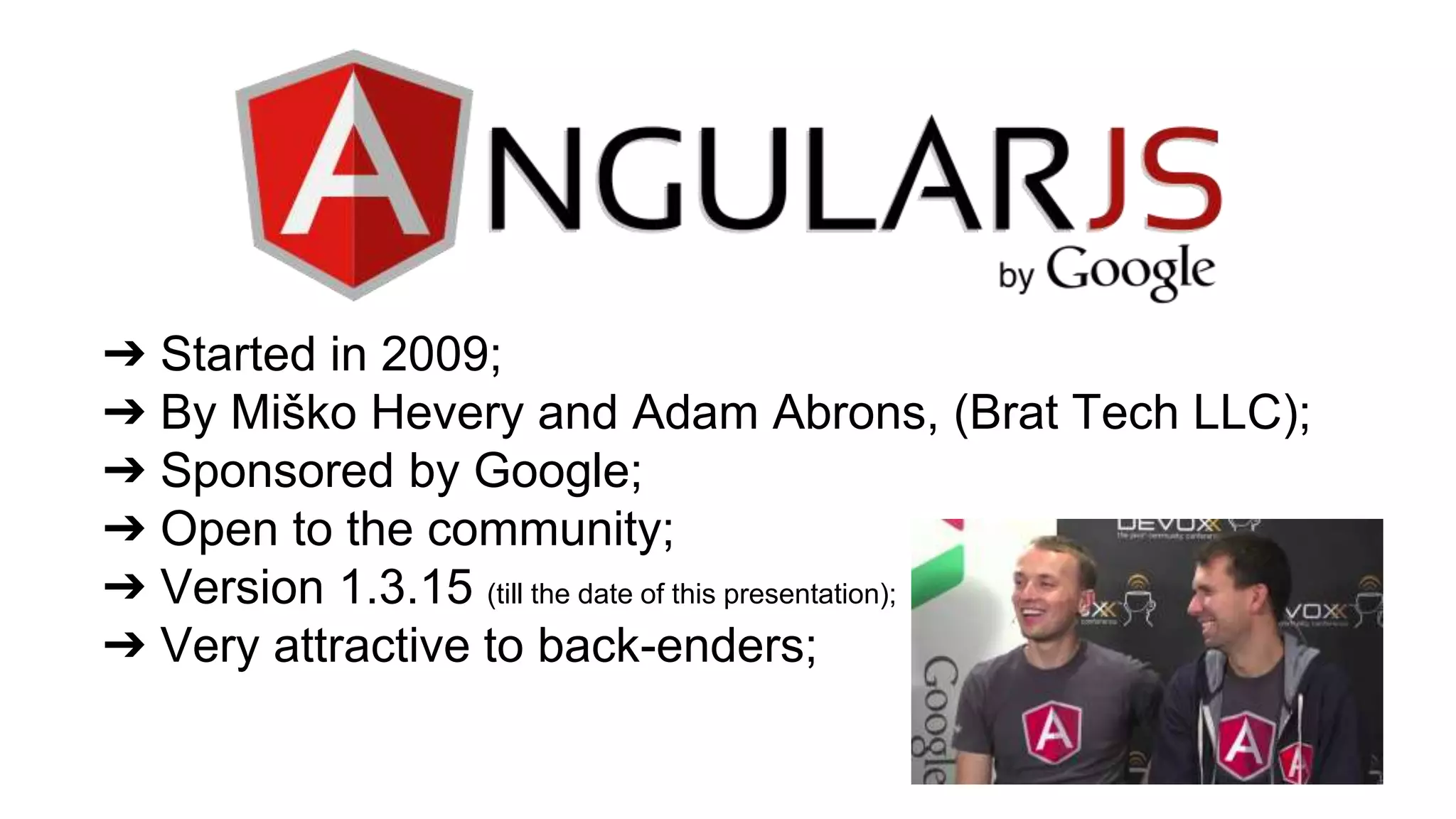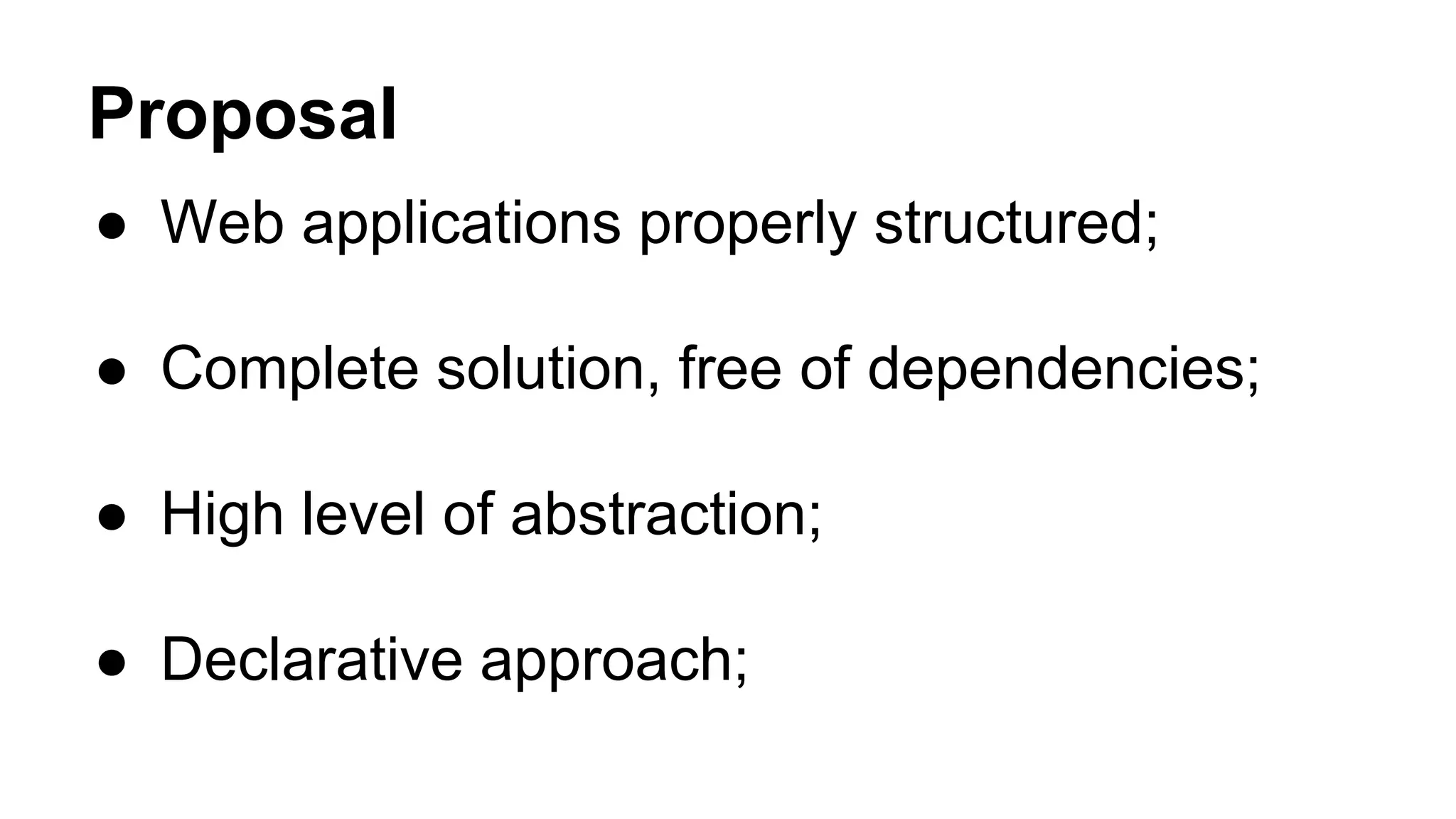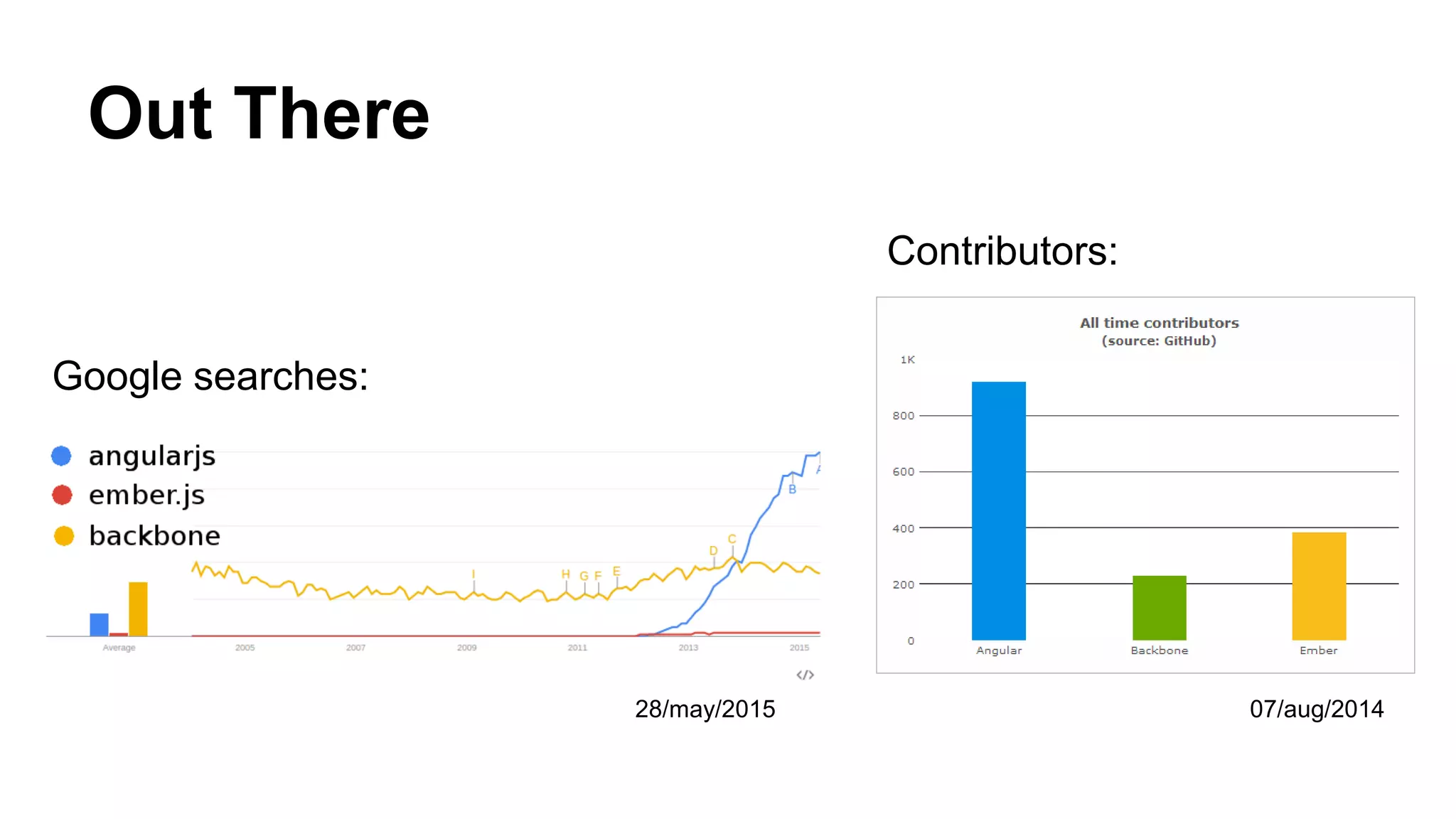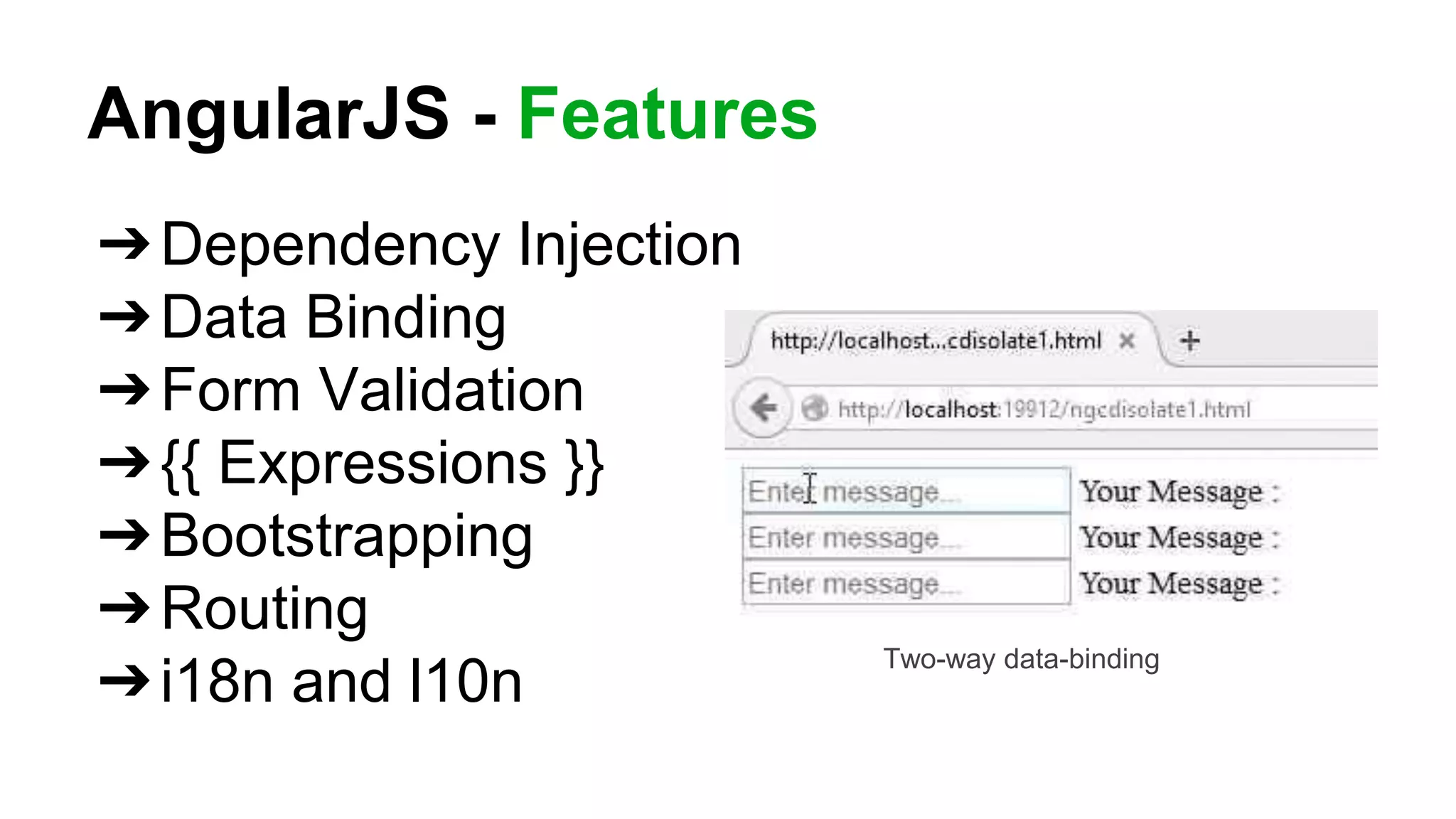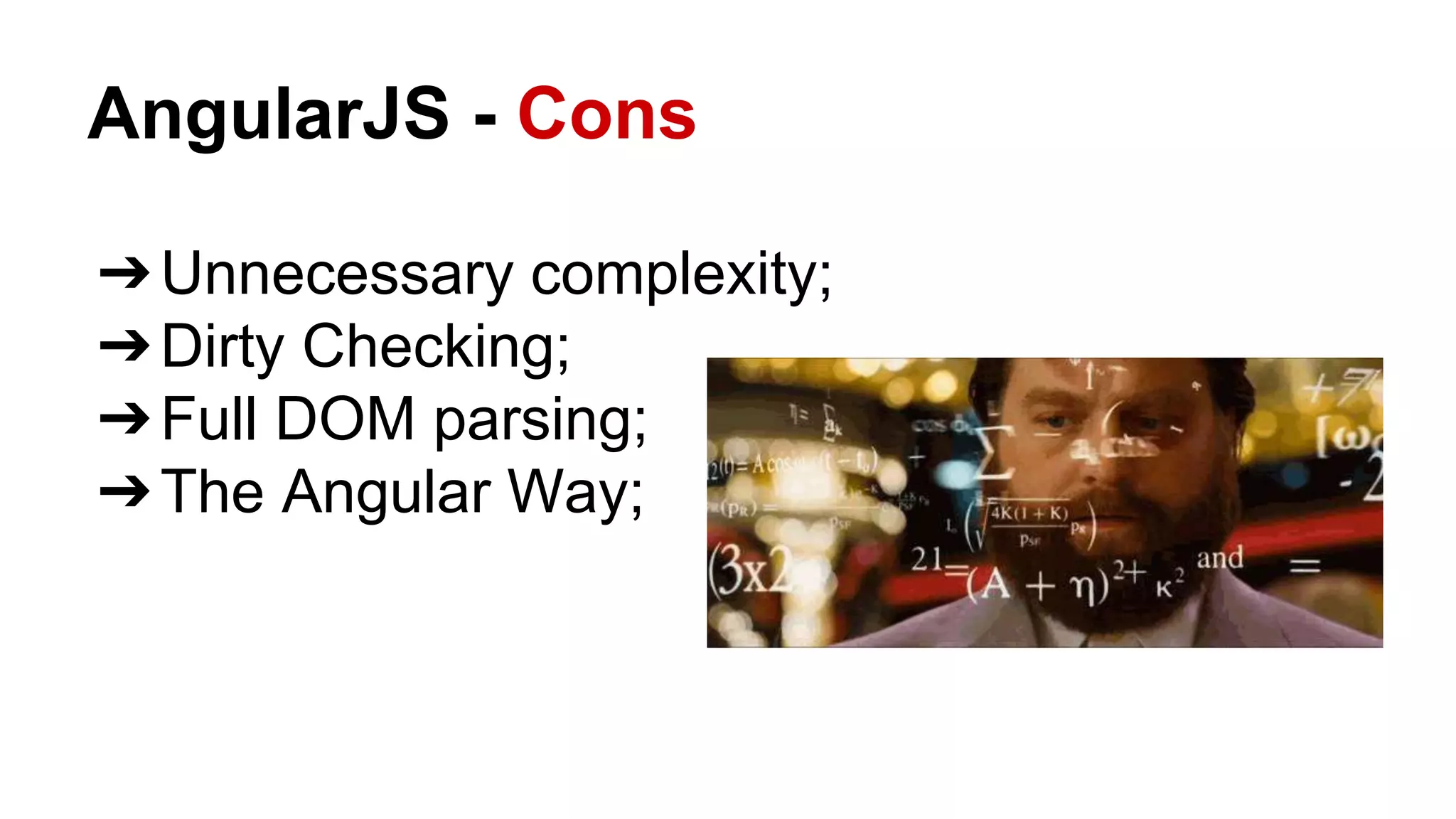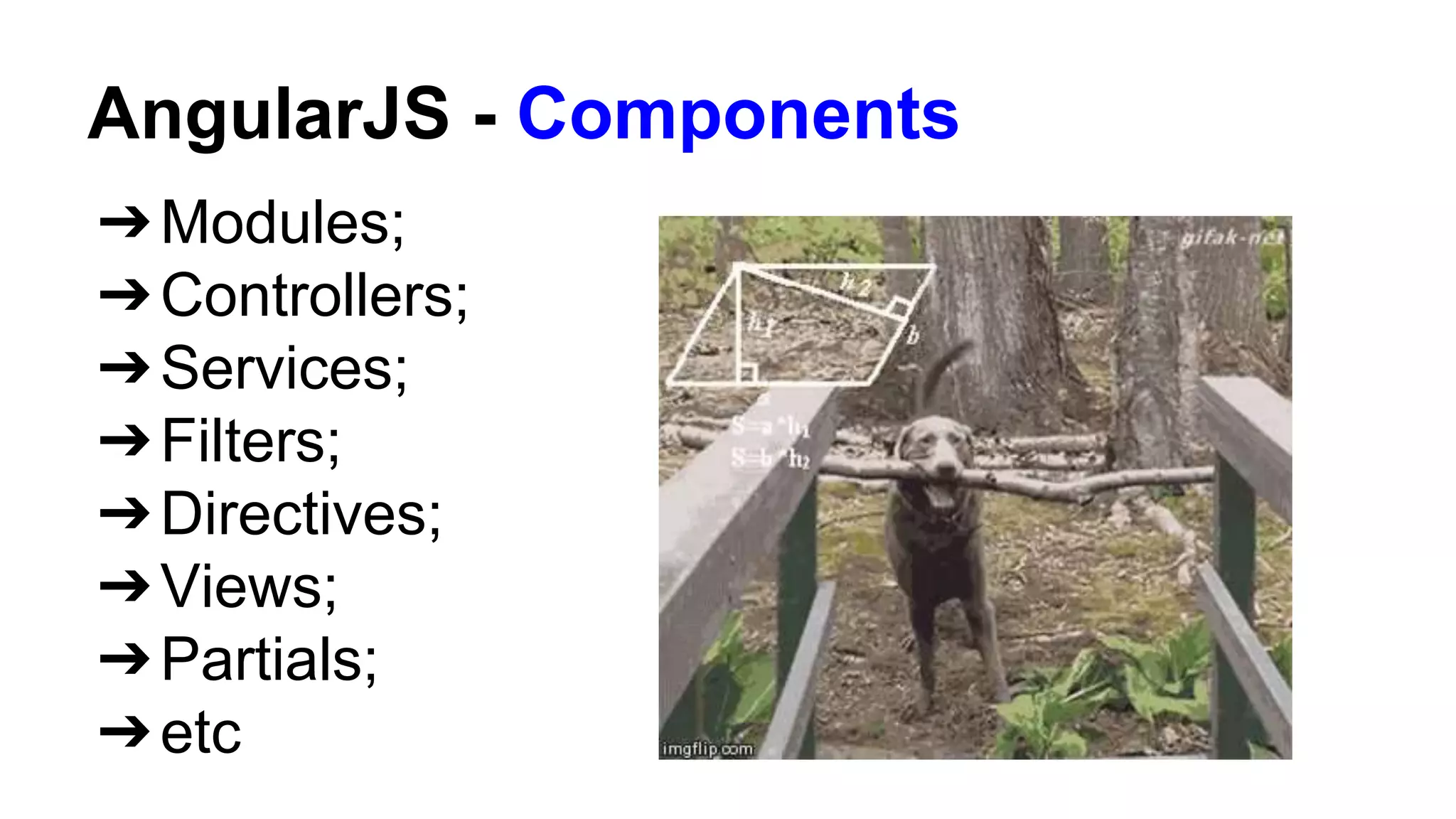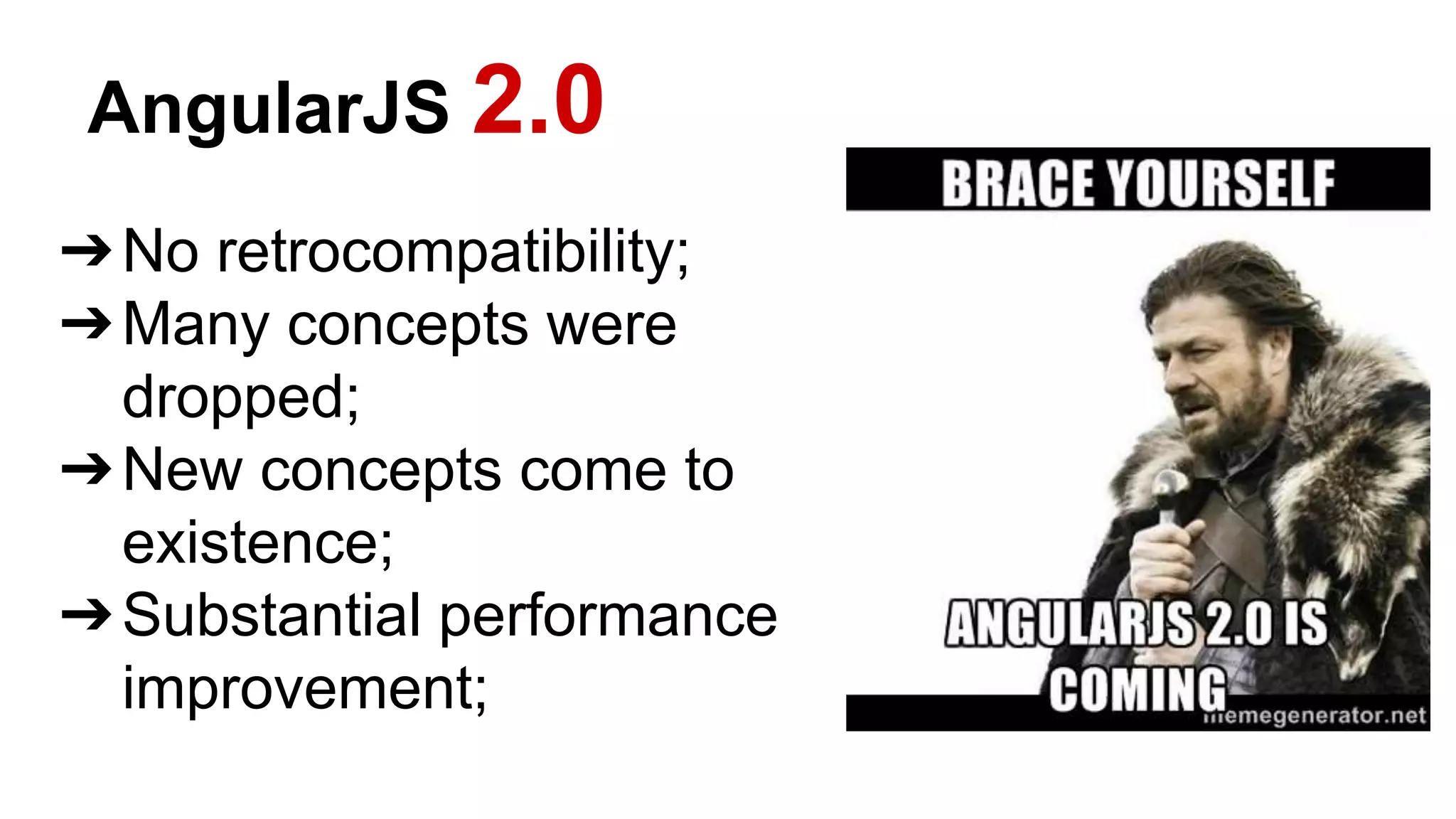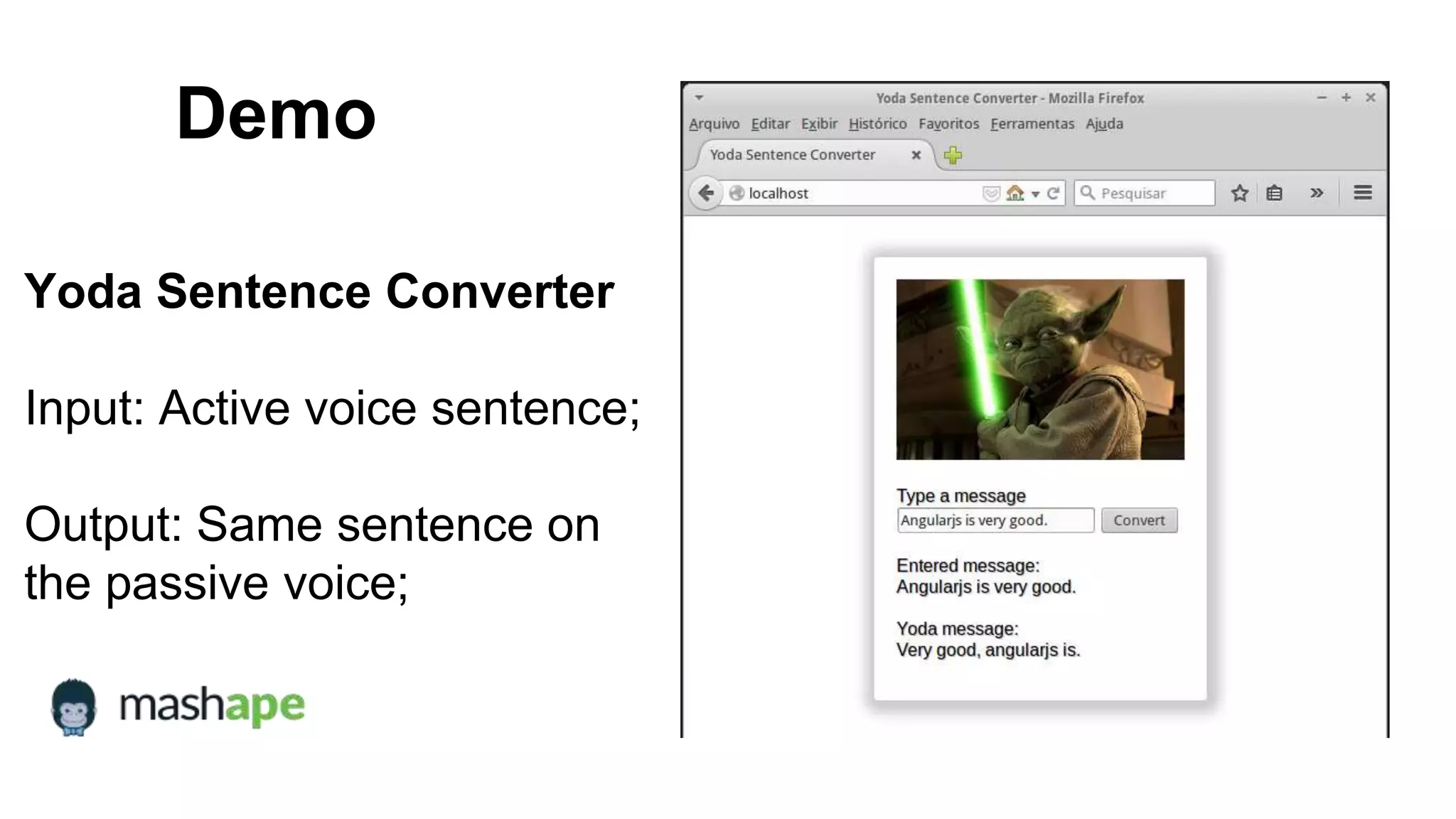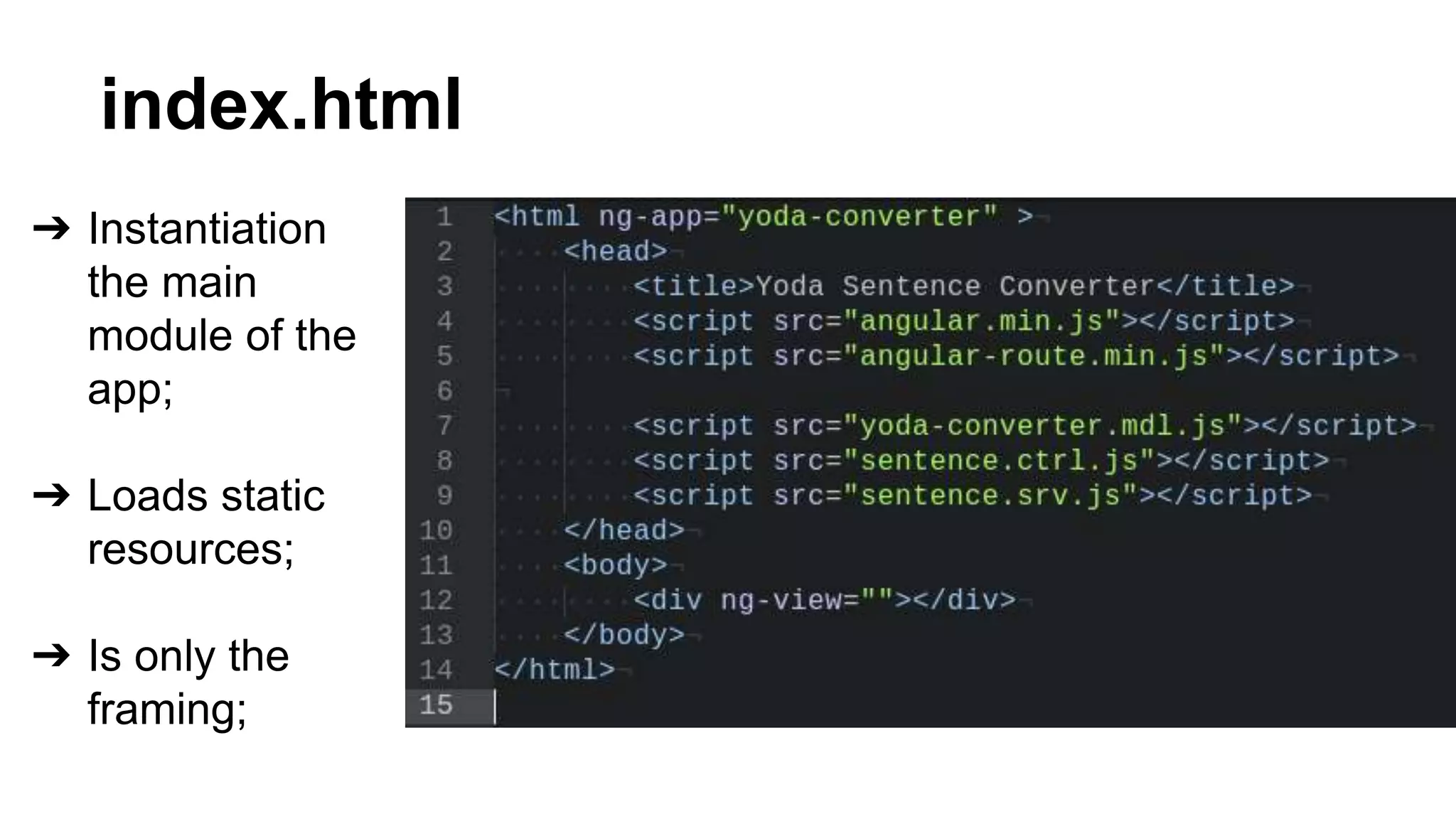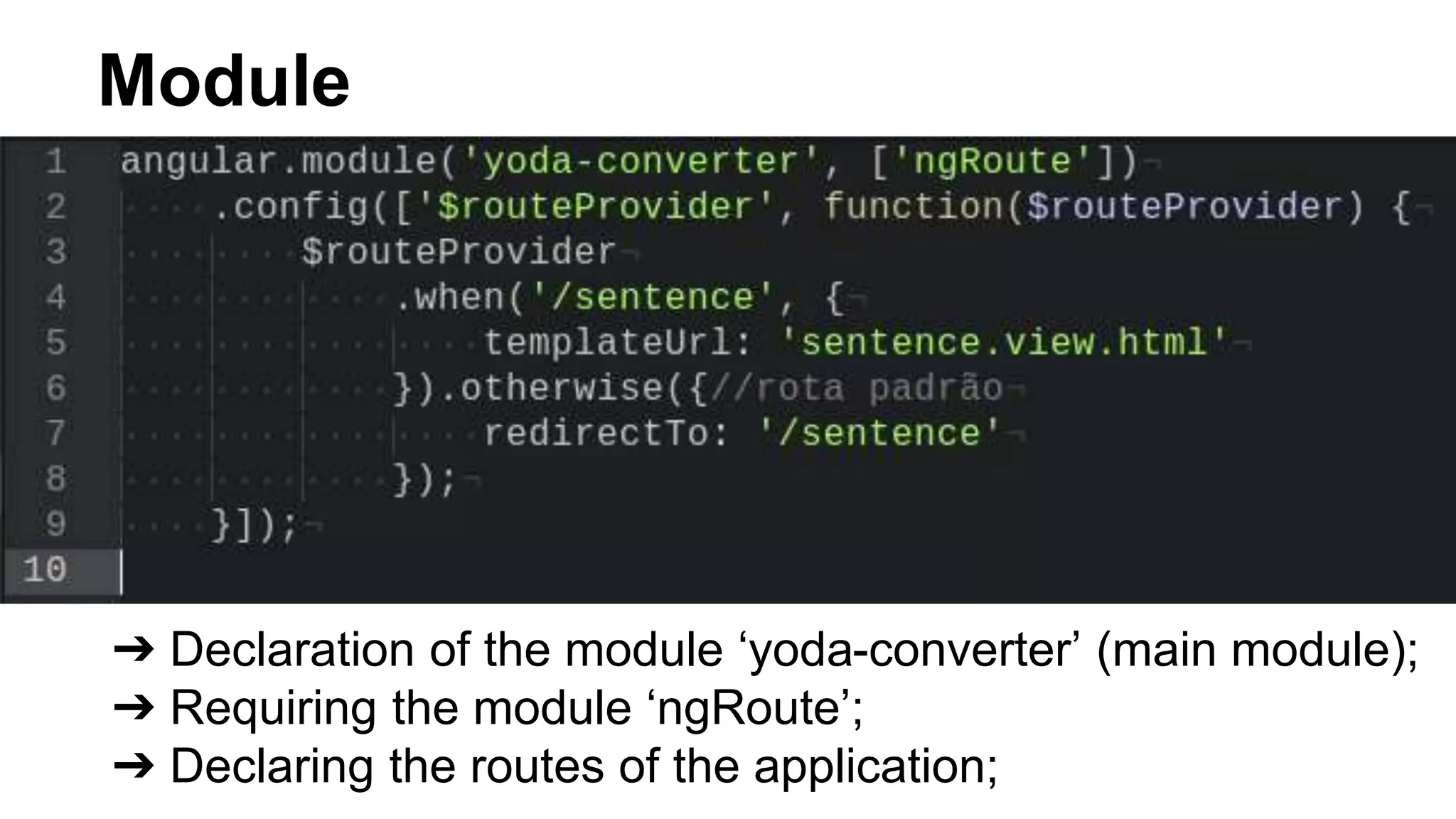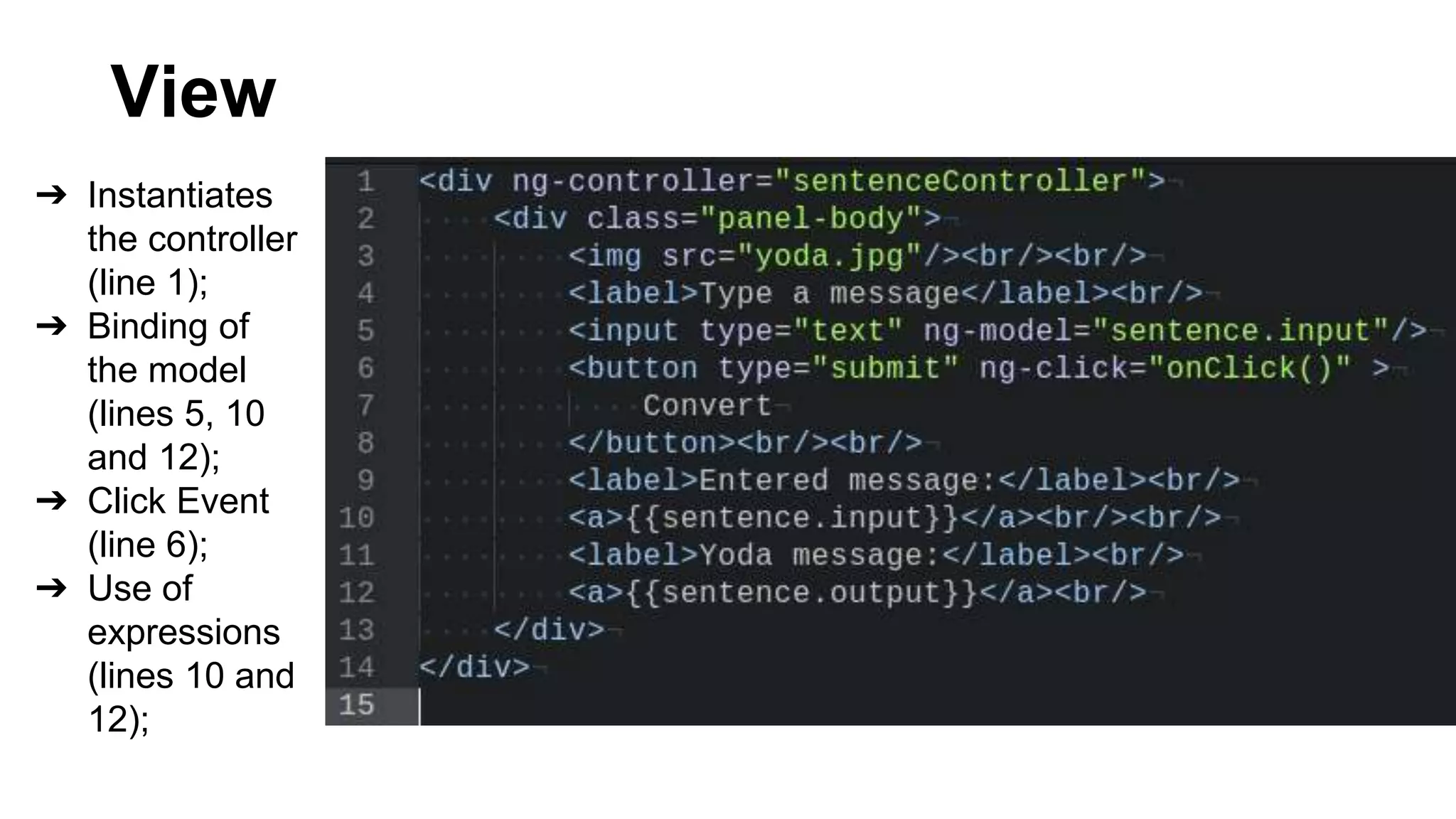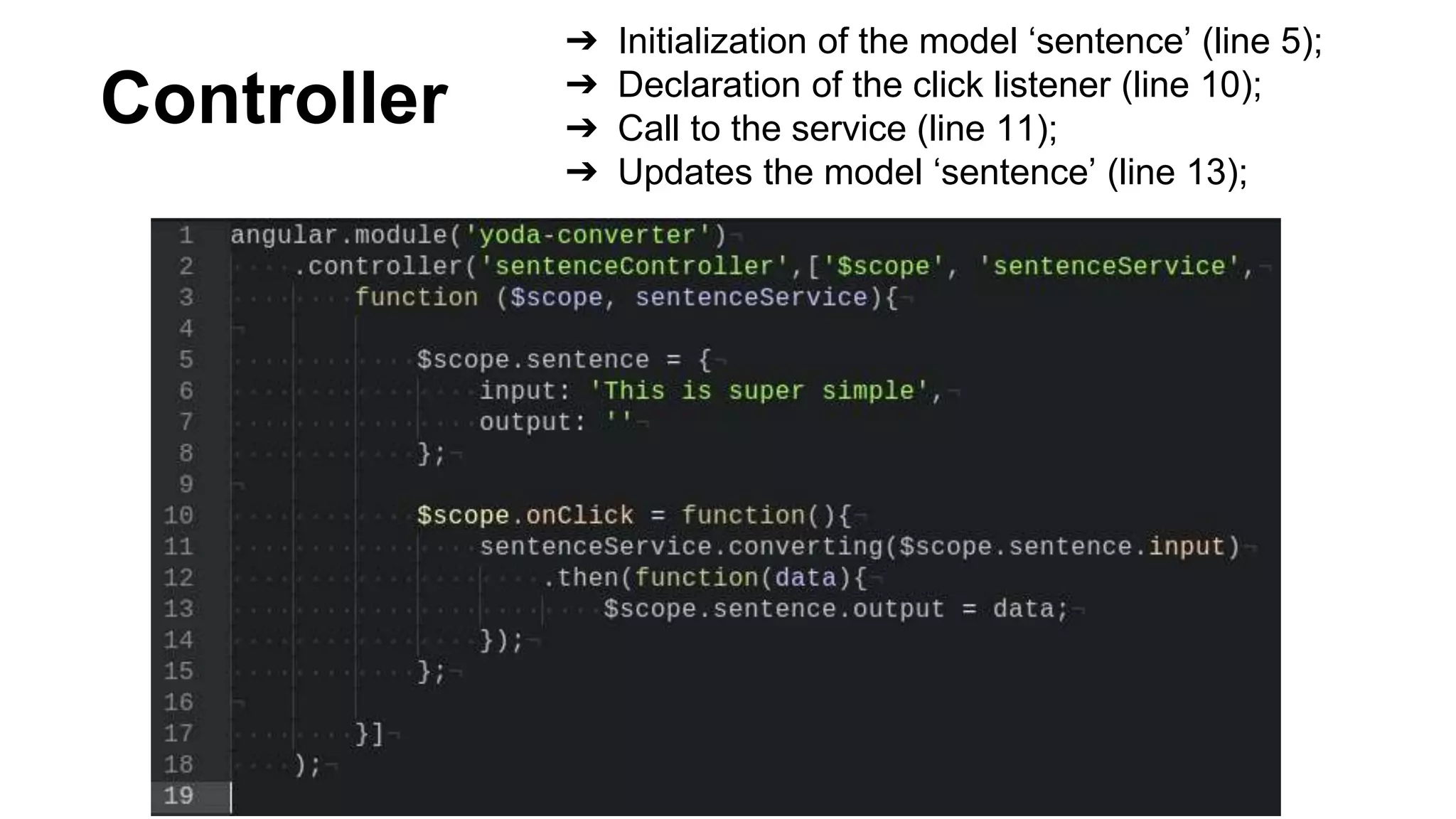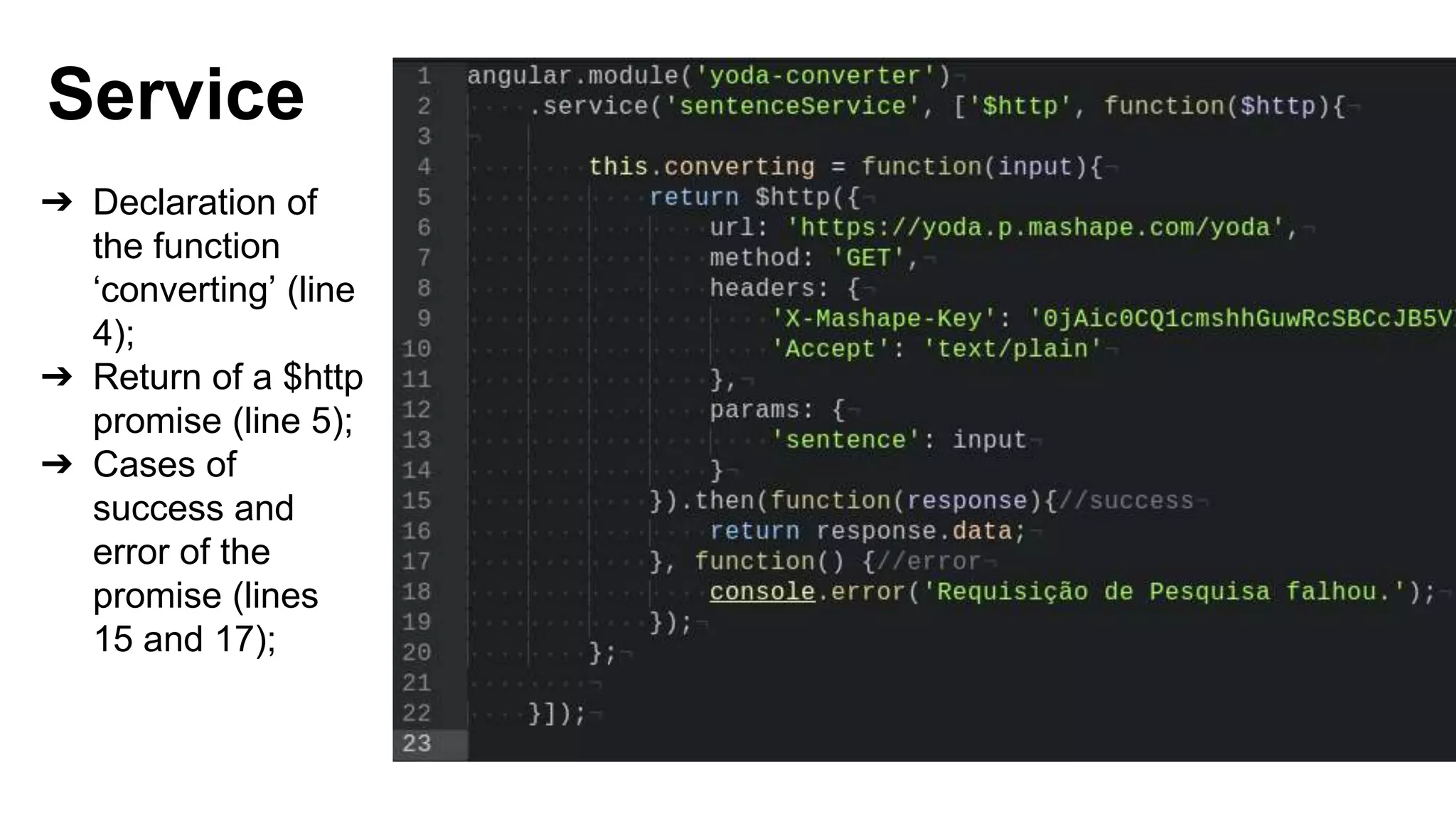The document discusses the evolution of front-end development, specifically focusing on Single Page Applications (SPAs) and AngularJS as a primary framework. It covers the structure, tools, features, and components of SPAs, including the transition to AngularJS 2.0. Key points include the importance of dependencies, task management, and the overall organizational framework of developing SPAs.


![Single Page Applications
“Single Page Applications (SPA) are built on
expanding reach via the browser, reducing
round tripping, and enhancing User Experience
(UX) [...] you can build a SPA that supports
robust business applications. Angular,
Durandal, and Ember are three great SPA
presentation frameworks that lead the way in
this area.”
John Papa, Google Dev.
Expert, Microsoft MVPJohn Papa](https://image.slidesharecdn.com/ym2xhyn8r92lzpkhc2h6-signature-44b6360f130c1d672b871a0275bf5ab9a974b9421af0624b1b97dd811043d2a3-poli-150628223137-lva1-app6891/75/Building-SPAs-with-AngularJS-3-2048.jpg)

